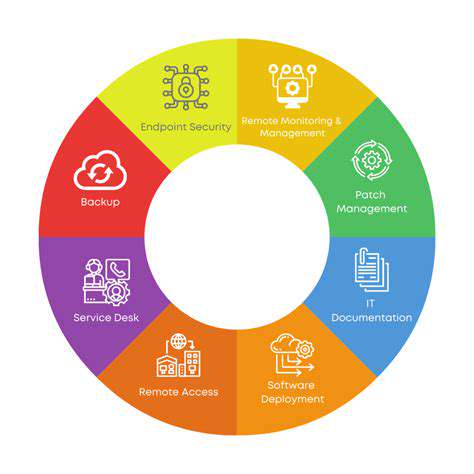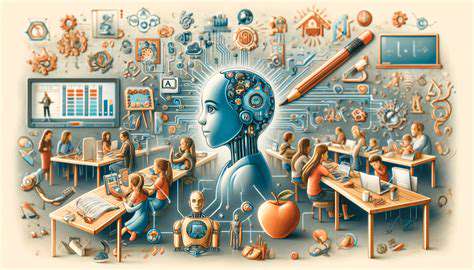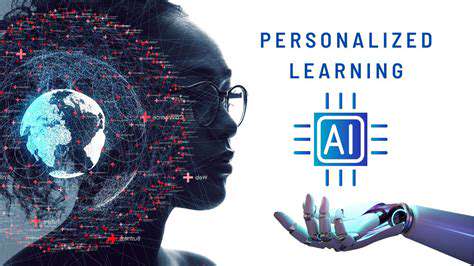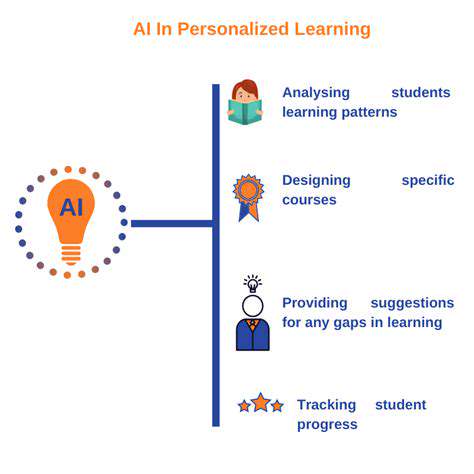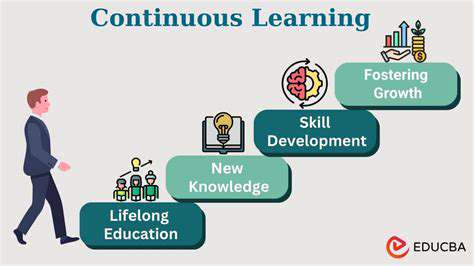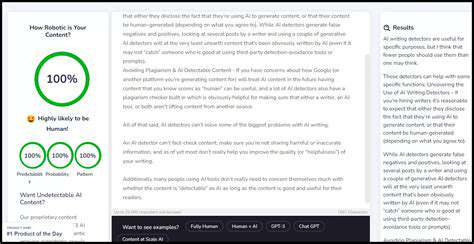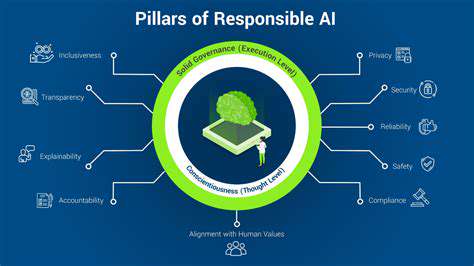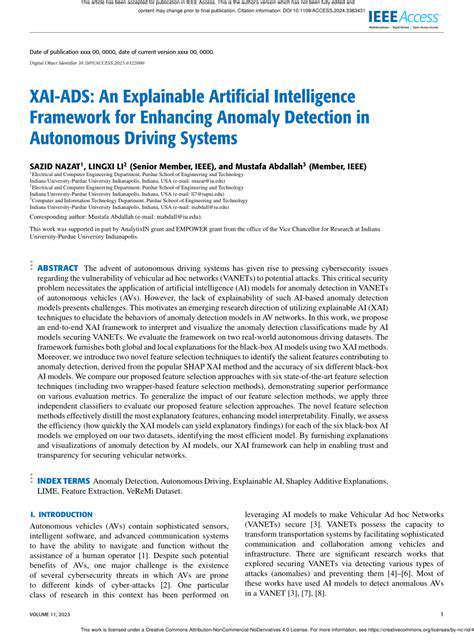
Applications of XAI in Different Autonomous Systems
Applications of XAI in Autonomous Vehicles
Modern autonomous vehicles rely heavily on explainable AI (XAI) to ensure operational safety and reliability. By offering clear insights into the AI's decision-making process, XAI helps engineers and users comprehend how the system reacts in diverse scenarios. This transparency is indispensable for debugging errors, spotting biases in training data, and fostering public confidence. For instance, when a vehicle brakes unexpectedly, XAI can pinpoint the exact cause, allowing engineers to refine safety protocols. Such clarity is vital for the broader acceptance of self-driving technology.
Moreover, XAI enables the creation of more resilient autonomous systems. When developers understand the rationale behind AI decisions, they can optimize algorithms to handle unpredictable situations better. This adaptability is crucial for operating in dynamic environments, ensuring both safety and efficiency. Transparent AI decision-making also helps address ethical concerns, making the technology more trustworthy for end-users.
XAI in Robotics
Robotics benefits significantly from XAI by improving performance and safety. Engineers can diagnose errors and refine a robot's actions when they understand its reasoning. For example, if a robot fails to grasp an object, XAI reveals why, allowing for algorithmic improvements. This transparency is critical in high-stakes applications where precision is non-negotiable. Additionally, XAI helps identify biases in training data, ensuring robots act fairly and without prejudice.
Explainability in Drone Navigation
As drones take on more complex roles—from delivery to surveillance—XAI becomes essential for transparent navigation. By explaining flight path decisions, XAI helps engineers troubleshoot issues and enhance reliability. For example, understanding why a drone chose a specific route allows for adjustments to avoid obstacles or optimize efficiency.
XAI also ensures drones operate safely in populated areas. When the reasoning behind a drone's actions is clear, it builds public trust and addresses safety concerns. This ethical deployment is key to integrating drones into everyday life.
XAI in Healthcare
Healthcare AI systems gain credibility through XAI by clarifying diagnostic and treatment decisions. Physicians can better trust AI recommendations when they understand the underlying logic. This transparency leads to more accurate diagnoses and improved patient outcomes. XAI also detects biases in training data, promoting fairness in healthcare applications.
XAI for Financial Applications
Financial institutions use XAI to demystify AI-driven decisions, such as loan approvals. By revealing how algorithms assess risk, XAI ensures fairness and reduces bias. This transparency is critical for maintaining trust and addressing ethical concerns in algorithmic finance.
XAI in Transportation Systems
XAI optimizes traffic management by clarifying how AI systems control flow and routes. Engineers can identify bottlenecks and improve efficiency, reducing congestion. This transparency fosters trust and encourages wider adoption of smart transportation solutions.
XAI in Agriculture
Farmers leverage XAI to interpret AI-driven insights on crop management. Understanding why AI suggests specific actions allows for better data validation and algorithmic refinement. This transparency ensures responsible use of AI in agriculture, promoting sustainability.
Challenges and Future Directions of XAI in Autonomous Systems

Adapting to Evolving Technologies
The rapid pace of technological change demands continuous learning. Professionals must stay updated on AI, machine learning, and data science to remain competitive. Integrating these tools into existing workflows requires careful planning to mitigate risks and maximize benefits.
Addressing Ethical Considerations
Ethical challenges, such as data privacy and algorithmic bias, are central to AI development. Clear ethical guidelines and legal frameworks are essential for responsible AI deployment. These measures ensure technology serves society fairly.
Enhancing Collaboration and Communication
Effective teamwork is vital for technological progress. Open communication channels and collaborative platforms enable seamless knowledge sharing. A culture of mutual respect helps overcome barriers to innovation.
Ensuring Accessibility and Inclusivity
Technology must cater to diverse needs. User-centered design ensures advancements benefit everyone, avoiding exclusion. Prioritizing inclusivity prevents the widening of societal gaps.
Managing the Workforce Transformation
AI integration reshapes job roles. Reskilling programs and mentorship prepare employees for new challenges. Organizations must adapt to support their evolving workforce.
Optimizing Resource Allocation
Strategic investments in technology and training maximize returns. Long-term planning aligns resources with organizational goals, ensuring sustainable growth.
Fostering Innovation and Creativity
Encouraging experimentation drives progress. Providing resources for creative exploration helps develop groundbreaking solutions.
Improving Trust and Safety Through Explainable AI
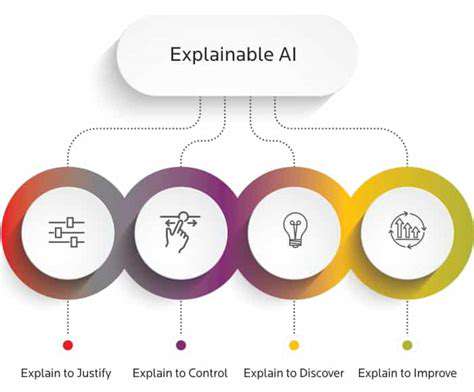
Building Trust in Online Communities
Trustworthy online spaces require clear rules and active moderation. Combining technology and human oversight fosters safe, respectful interactions. Users must feel secure to participate fully.
Enhancing Safety Measures
Robust security features, like two-factor authentication, protect users. These measures build confidence in digital platforms.
Promoting Responsible User Behavior
Education on ethical conduct cultivates positive environments. Encouraging empathy and reporting mechanisms safeguards communities.
Utilizing AI and Machine Learning
AI tools detect harmful content efficiently. Automated flagging systems uphold community standards, improving user experience.
Implementing Robust Moderation Strategies
Skilled moderators enforce guidelines fairly. Their swift action maintains order and trust.
Addressing Cyberbullying and Harassment
Clear policies and victim support are critical. Proactive measures deter abuse and protect vulnerable users.
Continuous Monitoring and Evaluation
Regular updates adapt to new threats. Feedback loops ensure safety measures remain effective over time.


